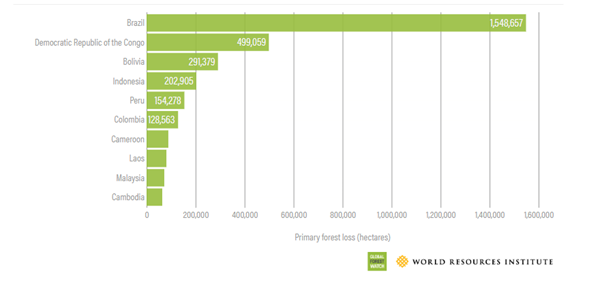Although the world is firmly focused on global palm oil prices right now, the picture for palm-related deforestation has improved significantly in 2022.
New research by Chain Reaction Research indicates that palm oil-related deforestation has fallen to its lowest levels in four years. This is in line with research by Global Forest Watch that reinforces Indonesia’s falling deforestation rate, which has hit its lowest level on record and a five-year decline.

Commentators have regularly pointed out that it has been the forest reforms undertaken by the Jokowi administration that have resulted in the falls in deforestation. However, there are many who maintain that this is the result of pressure from anti-palm oil campaigners that have changed customer requirements in Western markets.
Given that around two-thirds of the global palm oil goes to developing countries, it is clear that it is the changes in laws on the ground that have made the most impact.
The moratorium, introduced under President Yudhoyono, has been in operation since 2011. The enforcement of the moratorium since then has steadily improved, and it is much better enforced across the board by national and provincial authorities.
The FAO cited the measures taken by the Indonesian government in its report released at the beginning of May, State of the World’s Forests 2022. The report noted:
“Indonesia adopted a temporary moratorium (in force from September 2019 to September 2021) on the expansion of oil-palm plantations and imposed (in 2019) a permanent ban on the clearing of primary forests and peatland – affecting both oil-palm and timber plantations – on 66.2 million ha of these strategic ecosystems.”
The report was released at the World Forestry Congress, where the FAO’s Remote Sensing Survey was also released. The report noted that between 2000 and 2018 around 90 per cent of deforestation was due to agriculture, with 37.5 per cent being due to livestock grazing, and 52.5 per cent due to cropland expansion.
Only 7 per cent of global deforestation in that time was due to palm oil – which coincided with some of Indonesia’s highest deforestation rates. These numbers clearly demonstrate that many other crops and farming practices contribute to global deforestation on a much greater level than palm.
For example, global deforestation due to livestock grazing – mostly in South America – was nearly six times higher than palm. Deforestation in Africa due to non-palm cropland expansion was around four times higher than palm deforestation in Asia.
Even within South and Southeast Asia, palm oil was responsible for around one-third of deforestation – more than half was due to other crops.
The new data released by the World Resources Institute leading up to the World Forest Congress also noted that Indonesia’s deforestation levels had fallen significantly in 2021 compared with other countries. Indonesia’s deforestation levels sat at around 200,000ha, behind Brazil (1.5 million ha), DRC (500,000 ha) and Bolivia (291,000 ha). As a percentage of forest area, Indonesia’s forest loss represented 0.2 per cent of its forest area.
However, it’s also worth noting that Russia’s forest loss – due to fire – in 2021 was more than 5 million ha, far outstripping Indonesia’s forest loss in the same period.

The numbers will be sobering reading for anti-palm oil campaigners that see Indonesian palm oil as the greatest threat to global forests. It is clear that many other countries and commodities are bigger contributors.
